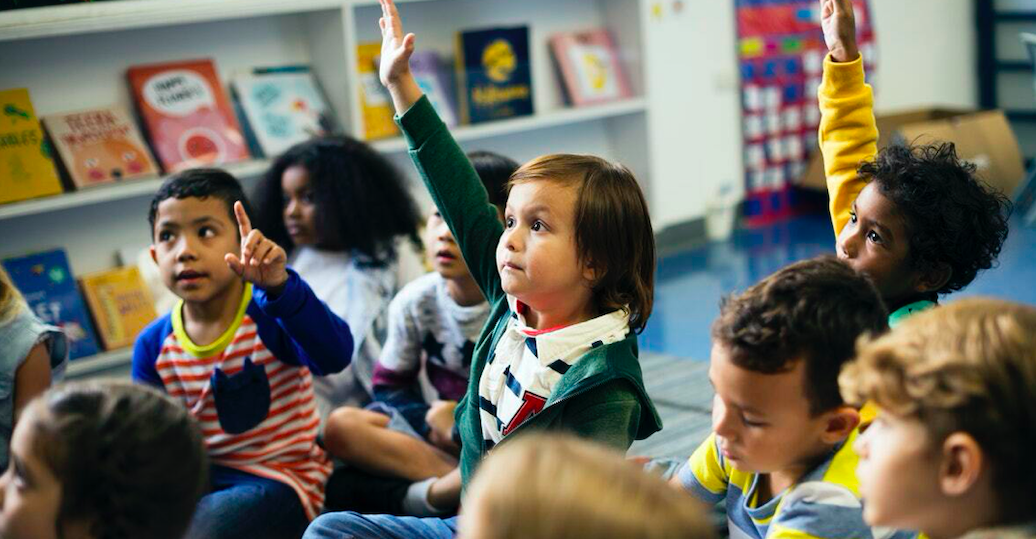Meet Lucy, Lucy is a teacher at Methodist Ladies College in Mallacoota and spoke to us about how she uses mindfulness in her everyday life and in the classroom.

Tell us a bit about yourself...
We often hear people say that they could use an extra hour in their day - what if I said that was possible? Many years ago, I was introduced to mindful practices by my auntie. She vowed that by taking time for oneself, one could give a little more time to the journey that I find myself on. For whatever reason, this resonated with me - and so my mindfulness adventure began - I can't imagine not having mindfulness in my day. Holding space for yourself, to create space for your future self is a wild concept; and can be achieved through habitual, targeted and effective mindfulness.
My self-awareness and sense of empowerment has increased as a result of regular mindfulness. Imagine what would happen if young people, your child or your student did the same?
Read more about the surprising effects of mindfulness for teachers.
How long have you practised mindfulness and what made you start?
Having been exposed to it whilst at school and subsequently through university, I was thrilled to discover that the first primary school I worked at embedded it into their daily structure. Each morning students would have 10 minutes of 'ready to learn time' with the sole purpose of achieving its name. It changed the way I saw spare time and how creating space in a day for a mindfulness session, can make more space in the day. At the first primary school, I began teaching at I introduced mindfulness as part of the curriculum and incorporated Smiling Mind meditations into my day.
Implementing mindfulness in the classroom gives me the ability to frame the day and for myself and the students. I find that mindfulness helps to create clarity and levels out the playing field so all students can start their day in the same way, with focus and a clear sense of purpose.
![]()
How do you incorporate mindfulness into your classroom and how often do you practise?
When I worked in the primary school setting I would run guided meditation or mindfulness sessions. These sessions would take the form of anything from visualisation to recognising breath and sounds, to mindful activities such as colouring.
Another way I would personally incorporate mindfulness sessions into my day would be after break or lunchtime when there has been a period of high activity to help shift the atmosphere into a calmer energy and allow the students to focus.
I often find that I incorporate short sessions when they are needed and when I think students need time to recalibrate and prepare for the next activity at hand. As I work on a residential campus, sometimes I find the students need a moment of mindfulness in the evening to help them sleep and as that third space between what they’ve been working on during the day and before going to bed.

Do you see the benefits of mindfulness in the classroom?
I absolutely see the benefits of mindfulness in the classroom in several ways. The most immediate is the reduction of high-level energy either within individual children or within the room after a mindfulness session. I find the vibe in the classroom just completely shifts.
The ongoing benefits have been remarked on by both students and parents from both primary and secondary age, that it gives them a moment to catch their breath or shift their headspace and recognise where they are and how they are feeling.
Self-awareness is a real benefit of mindfulness in the classroom because it gives students the ability to recognise their ability and what they are capable of in and of that moment. I find it gives them a moment of empowerment and agency to help them tackle the school day.
Why do you think mindfulness works so well for teachers?
As teachers, we often speak about students being able to access their learning. Sometimes it can be the headspace they are in that is preventing this access. I find that mindfulness allows them to recognise what's in front of them and how they can make the most of any situation. I find it helps to empower students whatever their age and gives them a time to focus on their thinking, which in turn helps reap the benefits on the academic side of the classroom.

For people starting out do you have any recommendations or tips for using mindfulness in their daily lives and in the classrooms?
My recommendation for using mindfulness in your daily life would be to set yourself a routine but also allowing yourself to be flexible with it. Say you gratitude journal every night. Each day doesn’t have to have the same contribution or the same amount of words but the importance is the act of simply sitting down to write.
In our own lives there are so many different kinds of mindfulness, find what works for you and incorporate what you enjoy into your teaching and classroom setting. They say it takes 28 days to form a habit so give yourself time to learn and grow with it!
In the classroom, pick activities that will work for your students, and as we know, every class is different so trial different activities for different students. Just because it looks a little bit different for each student it doesn’t mean the benefits aren’t the same.
The other thing is there are so many different programs out there to help you with mindfulness practices that you can take part in together with your students. I would suggest a good starting point would be to look at the Smiling Mind Digital Care Packs, they have lots of activities for ages five - 12 in the classroom and at home.
If you feel you need a moment of recalibration in the room I often find taking a five minute breather from my lesson plan and having a ‘meditation moment’ can help. It might surprise you how children react to it. A final tip for teachers using it in the classroom is to be flexible and creative because it can be great fun.

For more tips and helpful resources on mindfulness in the classroom check out our Smiling Mind Digital Care Packs.
For further programs to help with mindfulness in the classroom download the Smiling Mind app.








.jpg)





